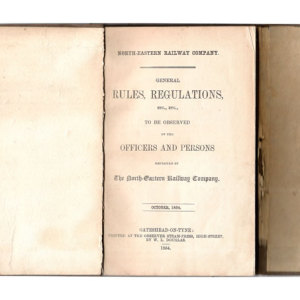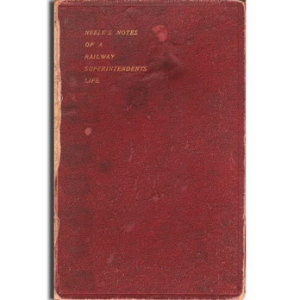Description
It is an interesting thought that until the production of the British Railways Rule Book of 1950 there was no comprehensive book of rules and regulations covering all the railways in the country. It did not emerge fully formed from a committee of civil servants and railway officials, but was rhe product of a century of discussion, argument, government pressure and compromise; it can be seen as a product of the Railway Clearing House (founded in 1842) to settle distribution of the share of revenues from passengers and freight traveling over the lines of more than one railway company. Through a system of regular conferences of Railway Officers of different responsibilities (General Managers, Superintendents of the Line, Goods Managers, etc.) it became a useful forum for the discussion of common problems, and for achieving a certain amount of voluntary standardisation between the working practices of different Railway Companies. The operative word being “Voluntary” – the RCH had no government standing, it wad run by the Railway Companies, for the Railway Companies.
Safety was an early consideration of the Superintendents Conference. All early railways had their own books of Rules and Regulations (we have on offer the North Eastern book of 1854
this was in common with many others, drawn up by a former Army Officer, in this case Capt. O’Brien, the Company Secretary, General Manager designate. Some of these early examples were somewhat eccentric in their outlook, like that of the Cornwall Railway, which stated that “The Company’s Servants are urged to attend Divine Service at least twice on Sundays, as this will be the means of promotion when vacancies occur.” Throughout the 19th and early 20h centuries, the Superintendents strove to achieve some standardisation on “Rules” as more and more junctions between different Companies were made, and through running became more common. The question of signalling bell codes was a typical bone of contention. Alexander Christison , North Eastern Railway Supt. Refused to attend one meeting on bell codes “as there is no possibility of the NER changing theirs.” Even something as fundamental as a common bell signal of “six beats” for “Obstruction Danger” took years to achieve, because one Company had always used “six beats” for something else. A leading protagonist of standardisation was G. P. Neele, London and North Western Supt., probably because the LNWR had so many interfaces with other Companies.
He tells the story in;
Technical advances (block telegraph, signal and point interlocking, continuous brakes) necessitated new rules, and it was obvious that it was sensible for these to be formulated by a sub-committee
of the Supts. Conferences and adopted mote or less en bloc by the member railways, thus by the time this GNR book was issued, rhere was a considerable agreement in the “Rules” if not in their numbering. The famous “In case of fog or falling snow, into the cabin you must go” rule,sumarising the action to be taken by a fireman of a locomotive detained unexpectedly at a home signal, later “Rule 55” is here, but numbered differently. Henceforth, regular updates would emanate from the RCH, requiring amendments to be pasted into rule books, until they became too unwieldy, and had to be replaced by new editions, each still containing some of the individual Companies’ rules.
New books were issued by some Companies in 1904/5/6/7, and by most in the early 1920’s just prior to Grouping.
A greater degree of standardisation was achieved on the books issued by each of the “Big Four” in 1933, and it was these which formed the basis for the British Railways book of 1950.
PREVIEW BELOW – MAY TAKE A WHILE TO LOAD.



Reviews
There are no reviews yet.